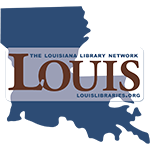Exploring the Arts
| Topic | Name | Description |
|---|---|---|
Meet Dr./Professor/Instructor [Name] |
||
Click here to read about your instructor's office hours. |
||
| Learner Support | Note to reviewers - this information will vary from campus to campus. |
|
Place holder. |
||
Note - These services will vary from campus to campus. |
||
Note to reviewers - the information listed here will vary according the instructor's campus resources. |
||
See description |
||
| Getting Started | Course Schedule |
|
Please click and open the Discussion Board Rubric File. This will help you when you respond to the discussion questons that will be posted at the end of each section. |
||
| FOR INSTRUCTORS: Using This Template and Additional Resources | ||
| Section 1 | ||
| Section 2 | ||
| Section 3 | ||
| Module 2: Theater | Guidelines for how to import content into Moodle |
|
| Section 1 | ||
| Section 2 | ||
| Section 3 | ||
| Midterm Assessment/Additional Exam Module | INSTRUCTORS: Read this page for information about adding a midterm assessment or additional exam. Delete or hide this page before course launches. |
|
Place holder |
||
| Section 1: Elements of Music/Conducting | ||
MUSIC |
||
https://youtu.be/t9Mo-bkl4ko |
||
. Watch and Listen to the YouTube Video about Structure and Form in music. Please take detailed notes so that you will be able to do the assignment related to this video. You must pause and re-run the video several times to be able to do what will be requested in the assignment for you to do. |
||
SIMPLE PATTERNS OF CONDUCTING: |
||
HANDOUT |
||
| Section 2: Instruments of the Orchestra & Voice | ORCHESTRA |
|
The instruments consist of the String Section, Woodwind Section, Brass Section, Percussion Section, and the Keyboard instruments. Please utilize the YouTube sections under each lecture about (Strings, Woodwinds, Brass, Percussion, and Keyboard) to experience the instrument visually and the sounds that it can produce. The Lecture is in this Topic two. |
||
Position of the
larynx for various vowel sounds A trained opera singer might have a range of three to four octaves, whereas the average person has a range of a little over an octave. |
||
| Section 3: History of Music | ||
During the Middle Ages, as during other periods of Western history, sacred and secular worlds were both separate and integrated. However, during this time, the Catholic Church was the most widespread and influential institution and leader in all things sacred. The Catholic Church’s head, the Pope, maintained political and spiritual power and influence among the noble classes and their geographic territories; the life of a high church official was not completely different from that of a noble counterpart, and many younger sons and daughters of the aristocracy found vocations in the church. Towns large and small had churches, spaces open to all: commoners, clergy, and nobles. |
||
RENAISSANCE PERIOD |
||
MUSIC |
||
CLASSICAL |
||
ROMANTIC |
||
MUSIC |
||
| Section 4: Forms/ Audience/American Music & Styles | READING |
|
JAZZ |
||
SPIRITUALS |
||
GOSPEL |
||
HIP HOP |
||
MUSIC |
||
| Module 4: Dance | Guidelines for how to import content into Moodle |
|
| Section 1: Introduction to Dance | ||
Ballet |
||
Modern |
||
Tap |
||
Dance |
||
Jazz |
||
| Section 2: Audience/Performers/History | ||
History |
||
| Section 3: Famous Dance Companies & Choreographers | Dancers |
|
| Final Exam/Final Project Module |

